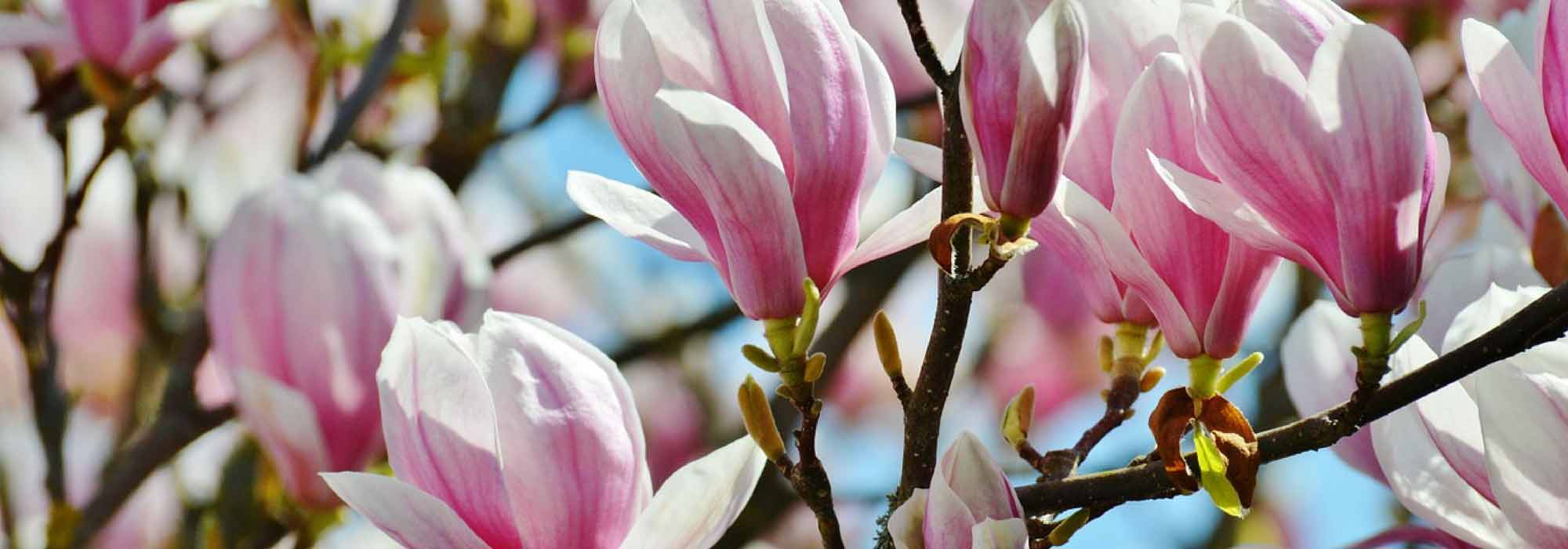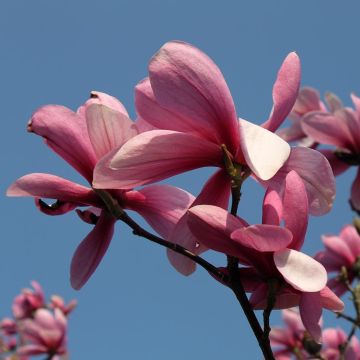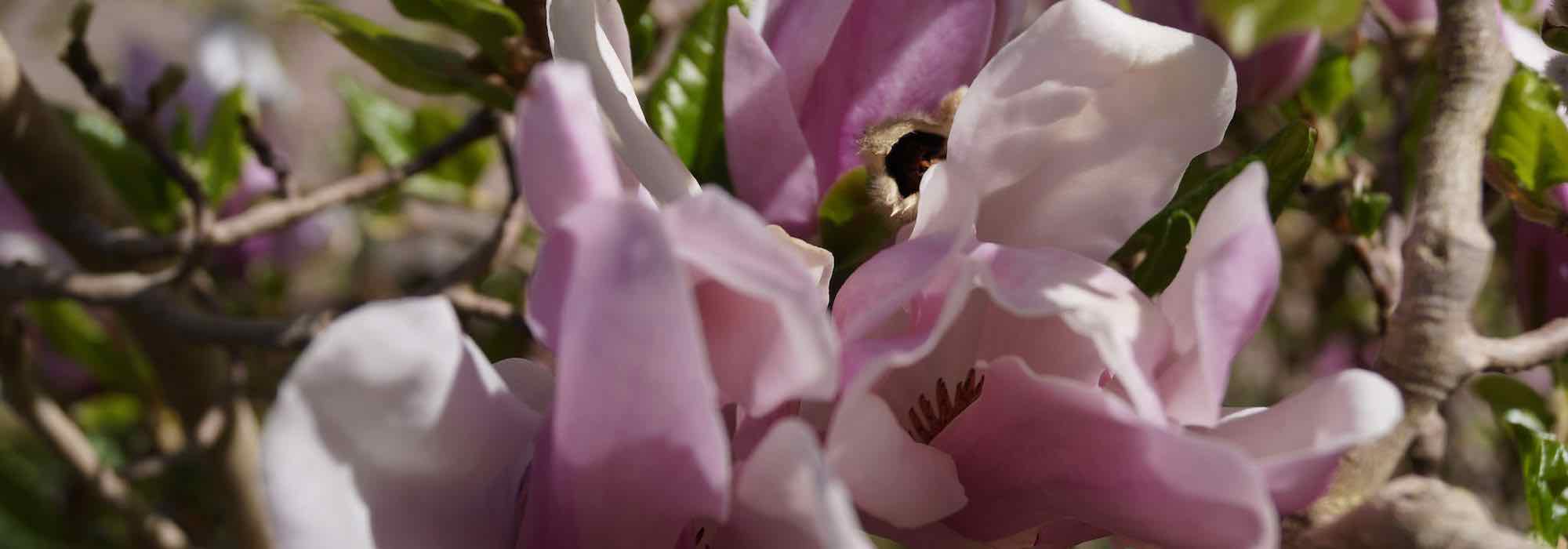The Magnolia × soulangeana 'Picture Superba' is a small deciduous tree or large bush that charms with its impressive spring flowering. This hybrid cultivar produces numerous large tulip-shaped flowers, pink-purple on the outside and white on the inside. Its fairly significant development makes it a top choice for medium to large gardens, where it can be used as a standalone specimen or in the background of borders.
The Magnolia × soulangeana 'Picture Superba' belongs to the Magnoliaceae family. It is one of the hybrids resulting from the cross-breeding of Magnolia denudata and Magnolia liliiflora. The first cultivar was created in the 19th century in France by Étienne Soulange-Bodin. The 'Picture Superba' variety is a small tree that exhibits moderately fast growth. Ultimately, it reaches between 4 and 8 m in height (on average 6 m) with a similar spread, depending on the growing conditions. It has an upright habit with a rounded crown. The flowers, with a diameter of up to 20 cm, appear from late March to late April, before the foliage unfolds. They are pink-purple on the outside and white on the inside, giving the overall flowering a pastel pink colour. Its green foliage consists of ovate leaves, measuring between 10 and 20 cm. In autumn, the leaves turn yellow before falling. The stems and bark remain discreet, without notable characteristics, but they steadfastly support this generous flowering. Fruits appear after flowering in the form of small, inedible reddish cones.
This 'Picture Superba' magnolia is best used as a standalone specimen in large gardens, where it will fully express its potential. It can also be planted in groups to form a large flowering hedge. To create beautiful combinations in the garden, it can be paired with Cornus florida to extend its spring flowering, Prunus serrulata 'Sunset Boulevard' for a duo of pink and white flowers, or Hydrangea paniculata 'Unique' for a voluminous effect in summer. The Cercis canadensis 'Forest Pansy' can also provide a beautiful complementarity in terms of texture and colour.





























































